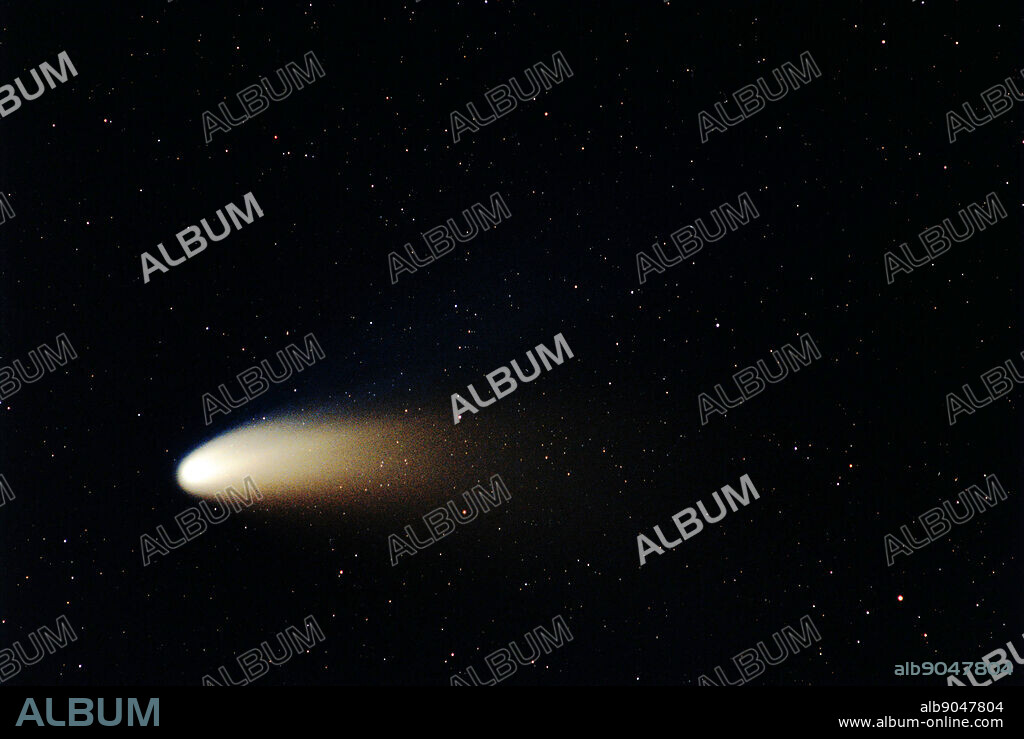alb9047804
The Dust and Ion Tails of Comet Hale-Bopp. In 1997, Comet Hale-Bopp's intrinsic brightness exceeded any comet since 1811. Since it peaked on the other side of the Earth's orbit, however, the comet appeared only brighter than any comet in two decades. Visible above are the two tails shed by Comet Hale-Bopp. The blue ion tail is composed of ionized gas molecules, of which carbon monoxide particularly glows blue when reacquiring electrons. This tail is created by the particles from the fast solar wind interacting with gas from the comet's head. The blue ion tail points directly away from the Sun.

|
Zu einem anderen Lightbox hinzufügen |
|
Zu einem anderen Lightbox hinzufügen |



Haben Sie bereits ein Konto? Anmelden
Sie haben kein Konto? Registrieren
Dieses Bild kaufen.
Nutzung auswählen:

Untertitel:
Siehe automatische Übersetzung
The Dust and Ion Tails of Comet Hale-Bopp. In 1997, Comet Hale-Bopp's intrinsic brightness exceeded any comet since 1811. Since it peaked on the other side of the Earth's orbit, however, the comet appeared only brighter than any comet in two decades. Visible above are the two tails shed by Comet Hale-Bopp. The blue ion tail is composed of ionized gas molecules, of which carbon monoxide particularly glows blue when reacquiring electrons. This tail is created by the particles from the fast solar wind interacting with gas from the comet's head. The blue ion tail points directly away from the Sun.
Bildnachweis:
Album / World History Archive
Freigaben (Releases):
Model: Nein - Eigentum: Nein
Rechtefragen?
Rechtefragen?
Bildgröße:
5130 x 3438 px | 50.5 MB
Druckgröße:
43.4 x 29.1 cm | 17.1 x 11.5 in (300 dpi)
Schlüsselwörter:
 Pinterest
Pinterest Twitter
Twitter Facebook
Facebook Link kopieren
Link kopieren Email
Email
